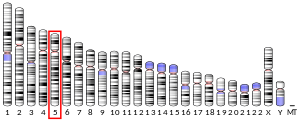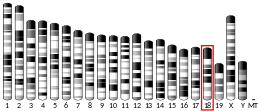DCP2
Protein found in humans
| DCP2 | |||||||||||||||||||||||||||||||||||||||||||||||||||
|---|---|---|---|---|---|---|---|---|---|---|---|---|---|---|---|---|---|---|---|---|---|---|---|---|---|---|---|---|---|---|---|---|---|---|---|---|---|---|---|---|---|---|---|---|---|---|---|---|---|---|---|
| Identifiers | |||||||||||||||||||||||||||||||||||||||||||||||||||
| Aliases | DCP2, NUDT20, decapping mRNA 2 | ||||||||||||||||||||||||||||||||||||||||||||||||||
| External IDs | OMIM: 609844; MGI: 1917890; HomoloGene: 13968; GeneCards: DCP2; OMA:DCP2 - orthologs | ||||||||||||||||||||||||||||||||||||||||||||||||||
| |||||||||||||||||||||||||||||||||||||||||||||||||||
| |||||||||||||||||||||||||||||||||||||||||||||||||||
| |||||||||||||||||||||||||||||||||||||||||||||||||||
| |||||||||||||||||||||||||||||||||||||||||||||||||||
| |||||||||||||||||||||||||||||||||||||||||||||||||||
| Wikidata | |||||||||||||||||||||||||||||||||||||||||||||||||||
| |||||||||||||||||||||||||||||||||||||||||||||||||||
mRNA-decapping enzyme 2 is a protein that in humans is encoded by the DCP2 gene.[5][6][7]
DCP2 is a key component of an mRNA-decapping complex required for removal of the 5-prime cap from mRNA prior to its degradation from the 5-prime end (Fenger-Gron et al., 2005).[supplied by OMIM][7]
Interactions
DCP2 has been shown to interact with DCP1A[8] and UPF1.[6][9]
References
- ^ a b c GRCh38: Ensembl release 89: ENSG00000172795 – Ensembl, May 2017
- ^ a b c GRCm38: Ensembl release 89: ENSMUSG00000024472 – Ensembl, May 2017
- ^ "Human PubMed Reference:". National Center for Biotechnology Information, U.S. National Library of Medicine.
- ^ "Mouse PubMed Reference:". National Center for Biotechnology Information, U.S. National Library of Medicine.
- ^ Wang Z, Jiao X, Carr-Schmid A, Kiledjian M (October 2002). "The hDcp2 protein is a mammalian mRNA decapping enzyme". Proceedings of the National Academy of Sciences of the United States of America. 99 (20): 12663–12668. Bibcode:2002PNAS...9912663W. doi:10.1073/pnas.192445599. PMC 130517. PMID 12218187.
- ^ a b Lykke-Andersen J (December 2002). "Identification of a human decapping complex associated with hUpf proteins in nonsense-mediated decay". Molecular and Cellular Biology. 22 (23): 8114–8121. doi:10.1128/MCB.22.23.8114-8121.2002. PMC 134073. PMID 12417715.
- ^ a b "Entrez Gene: DCP2 DCP2 decapping enzyme homolog (S. cerevisiae)".
- ^ Lykke-Andersen J (December 2002). "Identification of a human decapping complex associated with hUpf proteins in nonsense-mediated decay". Molecular and Cellular Biology. 22 (23): 8114–8121. doi:10.1128/MCB.22.23.8114-8121.2002. PMC 134073. PMID 12417715.
- ^ Lejeune F, Li X, Maquat LE (September 2003). "Nonsense-mediated mRNA decay in mammalian cells involves decapping, deadenylating, and exonucleolytic activities". Molecular Cell. 12 (3): 675–687. doi:10.1016/S1097-2765(03)00349-6. PMID 14527413.
Further reading
- Ueno K, Kumagai T, Kijima T, Kishimoto T, Hosoe S (January 1998). "Cloning and tissue expression of cDNAs from chromosome 5q21-22 which is frequently deleted in advanced lung cancer". Human Genetics. 102 (1): 63–68. doi:10.1007/s004390050655. PMID 9490301. S2CID 36201527.
- van Dijk E, Cougot N, Meyer S, Babajko S, Wahle E, Séraphin B (December 2002). "Human Dcp2: a catalytically active mRNA decapping enzyme located in specific cytoplasmic structures". The EMBO Journal. 21 (24): 6915–6924. doi:10.1093/emboj/cdf678. PMC 139098. PMID 12486012.
- Ingelfinger D, Arndt-Jovin DJ, Lührmann R, Achsel T (December 2002). "The human LSm1-7 proteins colocalize with the mRNA-degrading enzymes Dcp1/2 and Xrnl in distinct cytoplasmic foci". RNA. 8 (12): 1489–1501. doi:10.1017/S1355838202021726. PMC 1370355. PMID 12515382.
- Grzymski EC (June 2003). "Visualizing an mRNA destruction line". Nature Structural Biology. 10 (6): 416. doi:10.1038/nsb0603-416. PMID 12768200. S2CID 40900780.
- Piccirillo C, Khanna R, Kiledjian M (September 2003). "Functional characterization of the mammalian mRNA decapping enzyme hDcp2". RNA. 9 (9): 1138–1147. doi:10.1261/rna.5690503. PMC 1370477. PMID 12923261.
- Lejeune F, Li X, Maquat LE (September 2003). "Nonsense-mediated mRNA decay in mammalian cells involves decapping, deadenylating, and exonucleolytic activities". Molecular Cell. 12 (3): 675–687. doi:10.1016/S1097-2765(03)00349-6. PMID 14527413.
- Cougot N, Babajko S, Séraphin B (April 2004). "Cytoplasmic foci are sites of mRNA decay in human cells". The Journal of Cell Biology. 165 (1): 31–40. doi:10.1083/jcb.200309008. PMC 2172085. PMID 15067023.
- Lehner B, Sanderson CM (July 2004). "A protein interaction framework for human mRNA degradation". Genome Research. 14 (7): 1315–1323. doi:10.1101/gr.2122004. PMC 442147. PMID 15231747.
- Liu SW, Jiao X, Liu H, Gu M, Lima CD, Kiledjian M (September 2004). "Functional analysis of mRNA scavenger decapping enzymes". RNA. 10 (9): 1412–1422. doi:10.1261/rna.7660804. PMC 1370627. PMID 15273322.
- Liu J, Valencia-Sanchez MA, Hannon GJ, Parker R (July 2005). "MicroRNA-dependent localization of targeted mRNAs to mammalian P-bodies". Nature Cell Biology. 7 (7): 719–723. doi:10.1038/ncb1274. PMC 1855297. PMID 15937477.
- Fenger-Grøn M, Fillman C, Norrild B, Lykke-Andersen J (December 2005). "Multiple processing body factors and the ARE binding protein TTP activate mRNA decapping". Molecular Cell. 20 (6): 905–915. doi:10.1016/j.molcel.2005.10.031. PMID 16364915.
- Wichroski MJ, Robb GB, Rana TM (May 2006). "Human retroviral host restriction factors APOBEC3G and APOBEC3F localize to mRNA processing bodies". PLOS Pathogens. 2 (5): e41. doi:10.1371/journal.ppat.0020041. PMC 1458959. PMID 16699599.
- Chu CY, Rana TM (July 2006). "Translation repression in human cells by microRNA-induced gene silencing requires RCK/p54". PLOS Biology. 4 (7): e210. doi:10.1371/journal.pbio.0040210. PMC 1475773. PMID 16756390.
- Olsen JV, Blagoev B, Gnad F, Macek B, Kumar C, Mortensen P, Mann M (November 2006). "Global, in vivo, and site-specific phosphorylation dynamics in signaling networks". Cell. 127 (3): 635–648. doi:10.1016/j.cell.2006.09.026. PMID 17081983. S2CID 7827573.
- v
- t
- e
| |||||
| RNA splicing |
| ||||
|---|---|---|---|---|---|
 | This article on a gene on human chromosome 5 is a stub. You can help Wikipedia by expanding it. |
- v
- t
- e

















